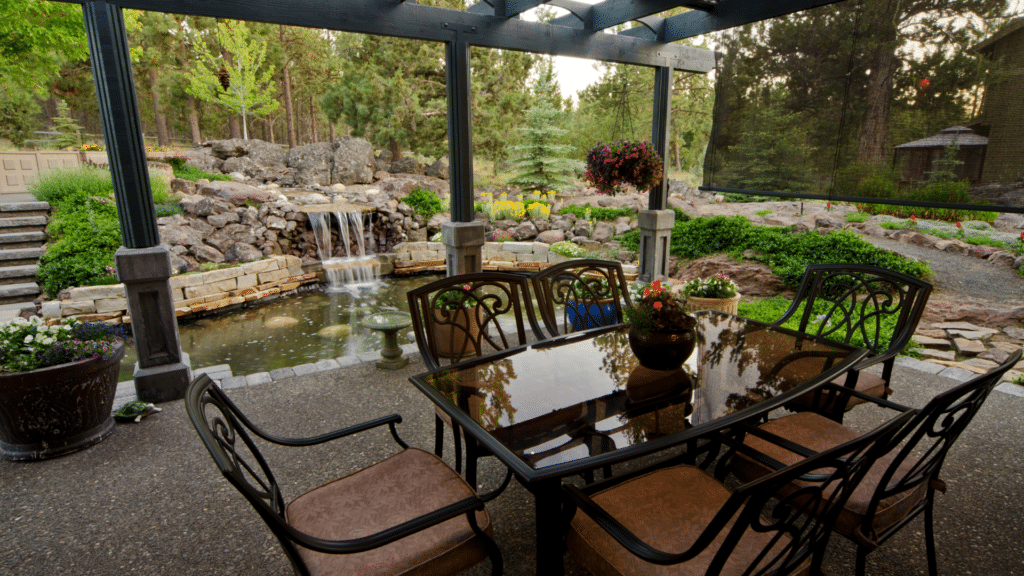Temperature is a very important aspect of pool maintenance and experiencing the water. Is 30 degrees Celsius (86°F) too hot for a pool? You may ask if you’re a pool service professional or someone who appreciates low-maintenance living. That question is especially pertinent if you utilize equipment like a robot pool cleaner since water temperature influences everything from swimmer comfort to the efficacy of your pool vacuum robot and other cleaning apparatus.
In this blog, we’re going to look at the benefits and potential issues of keeping a pool at 30°C, how this impacts pool usage and cleaning, and how managing the temperature should be part of your overall approach to pool maintenance.
Pool Temperatures — What’s the Best Temperature For Your Pool?
Most swimmers would agree that the ideal temperature for a pool is in the range of 25°C-28°C (77°F-82°F). This range is an ideal mix of comfort and purpose, as one can swim or do any water without getting too cold or too hot.
However, a lot of the pools, especially the ones with heating systems, keep it at 30°C for a more relaxing experience. However, is this temperature range too warm for pools? Let’s break it down.
Advantages of Keeping a Pool at 30°C
Comfort and Relaxation
Pool water that feels quite hot at 30°C is the kind of heat that is absolutely heavenly, especially if you’re using your pool to lounge in rather than blasting up and down the length. For many, this temperature range is just right for lounging or rehydrating post-workout. In particular, the atmosphere becomes spa-like, particularly with elements like a pool robotic cleaner that maintains the water clear.
Therapeutic Benefits
Therapeutic purposes also work with warmer pools. If you feel muscle pain or joint vibration, or you practice physiotherapy, water at 30ºC helps relieve the body. This is why hydrotherapy pools are usually kept at this temperature range to help with relaxation and pain relief.
30°C — What Makes a 30°C Pool Interesting?
Release of Additional Nutrients and Increase in Growth of Algae and Bacteria
One common issue with higher pool temps is increased algae growth. Temperature at which algae grows: 30°C (86°F). Warmer water means faster biological activity, so make sure you’re working to prevent those algae blooms by ensuring your pool cleaning robot is in peak working condition.
If an individual is using a robot pool cleaner, such as the Beatbot AquaSense — to maintain their swimming pool, they must also ensure that the water isn’t becoming stagnant and dirty as a result of low circulation, otherwise these problems can rear their ugly heads. If you’re not regularly cleaning your pool, warm temperatures can provide an ideal environment for algae and bacteria growth, which can make upkeep more difficult.
Water Evaporation
At 30°C, the evaporation rate rises even more, particularly at outdoor pools exposed to the sun. That means you will have to add water to the levels more often, which can cause higher use of chemicals and more work for the maintenance.
Also, warmer water conditions may impact the effectiveness of pool vacuum robots. Warmer water could make more debris float or change their sink, so your vacuum cleaner for the pool needs to be worked differently.
Comfort for Swimmers
For anyone doing competitive swimming or strenuous exercise, a 30°C pool may feel too hot. The most appropriate water temperature for exercise swimming is typically from 26ºC to 28ºC (79ºF to 82ºF). Swimmers may fatigue faster at 30°C, and the acceptance of warm temperatures will make them less comfortable.
A warm pool is excellent for relaxation but may be less so for those using the pool for exercise. For low-maintenance living, it’s key to think about the intended use of the pool when modifying temperatures.
In 30-degree weather, what does it do to your pool equipment?
A few key ways that warmer pool temperatures can impact the performance of your swimming pool robot cleaner and pool vacuum robot include:
Pool Robotic Cleaner Performance
While the vast majority of modern robotic pool cleaners, including the Beatbot iSkim Ultra, are designed to work in a variety of temperatures, warmer water can reduce their efficiency. Robot pool vacuums perform best in clean, debris-free water. But hotter means dirt and debris break down more quickly, and you may notice that your robot works more than a little extra to keep the pool pristine, particularly if algal blooms are a problem.
Energy Use
If you have a heated pool, keeping it to 30°C may prove costly in terms of power bills. This can get expensive over time, especially when dealing with large pools needing regularly adjusted levels. The pool cleaning robot may do a lot to keep the water clean so the automatic heating system doesn’t have to work as hard, but it’s still a good idea to keep an eye on energy consumption and adjust the heater accordingly.
Chemical Balance
Warmer water increases chemical reaction rates, which means your pool chemicals will degrade more quickly. This means that you might have to test and adjust your skimmer and pool vacuum systems more often for pool balance. Because oxidative damage occurs, chlorine dissipates faster, making it more difficult to maintain sanitation.
How to Effectively Manage Pool Temperature
Keeping your pool at the right temperature is a balancing act between comfort, cleaning effectiveness, and energy use. Here are some other tips on managing your pool at 30°C or how to adjust it if it’s too hot:
Invest in a Pool Cover
During the colder months or at nighttime, a lack of sun can also lead to a drop in water temperature, so it may be a good idea to invest in a pool cover to trap heat. This can cut back on the need to constantly bring up the heat and provide a more even temperature.
Regular Cleaning
Make sure to clean the pool regularly to prevent algae growth and to reduce energy consumption by your robot pool cleaner. Using a pool vacuum robot like the Beatbot AquaSense Pro will ensure that debris/dirt/algae are kept to a minimum as this will reduce the impact warm water has on the cleanliness of your pool.
Monitor Chemical Levels
Chemicals degrade more quickly in warmer water. Check and balance your pool’s chemicals regularly to keep your water safe. You are also going to want to try and prevent chlorine from dissipating so quickly by using stabilizers.
Final Thoughts: Is a Pool Too Hot at 30°C?
Bathers enjoy the comfort, relaxation, and therapeutic benefits of a 30°C pool, but it comes with its own set of difficulties. This can cause an increase in algae growth, as well as more strain on your pool cleaning bot, leading to more energy and money usage. One of the ways to avoid this extra hassle is to invest in advanced robot pool cleaners such as Beatbot AquaSense or Beatbot iSkim Ultra, which you can easily use to ensure that your pool is clean, warm, and inviting.
One way or another, whether or not 30°C is too hot for your pool comes down to what you’re hoping for: If you want a spa-like experience, it might be just what you want. But if you’re more interested in swimming for fitness or reducing the amount of maintenance, and stuff like swimming almost any day of the year, you may want to reassess or dial down the temperature so there’s a balance between comfort and practicality.






